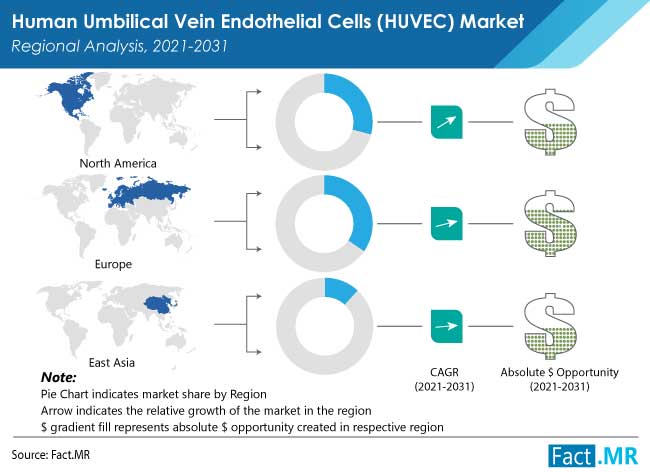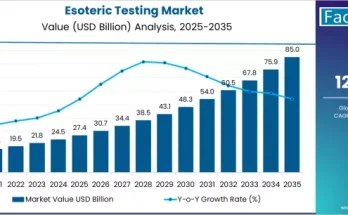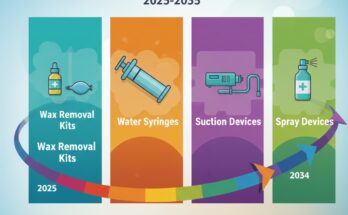Award-winning consulting firm Fact.MR’s report on the global human umbilical vein endothelial cells (HUVEC) market forecasts a healthy growth trajectory for the 2021-2031 forecast period. According to the study, rapid advancements in biotechnology and genetic engineering are opening up new growth avenues for advanced disease treatment, particularly across areas such as oncology. Demand for human umbilical vein endothelial cell-based treatment has been gradually gaining momentum, as advancements in genetic engineering and biotechnology become increasingly overt.
As per data published by GLOBOCAN, the global cancer burden rose to 19.3 million cases, while associated fatalities increased to 10 million by 2020. Amongst all the cancers, breast cancer accounts for nearly a quarter of the total cases diagnosed every year. Hence, healthcare providers are incorporating highly advanced therapeutic approaches, thereby widening the growth prospects for human umbilical vein endothelial cells.
Manufacturers are directing bulk of their investments across key regions such as China, India, and other countries in Asia Pacific. Over the years, these countries have witnessed unprecedented expansion of their existing healthcare infrastructure. This is majorly attributed to the presence of a huge population base, necessitating delivery of advanced healthcare for various chronic and infectious diseases.
Key Takeaways from Market Study
- By type, pooled donor-derived HUVECs are expected to experience elevated sales through 2031
- Oncology to emerge as a highly promising application area for HUVEC-based treatment
- The U.S. to generate multiple revenue streams for the market, across CVD treatment, oncology, and angiogenesis
- Extensive development of biotechnology and cell culture studies driving demand across India
“Rapid advancements in healthcare are prompting developments across key therapeutic areas, providing enough room for the proliferation of HUVEC-based therapeutics,”remarks a Fact.MR analyst.

Key Market Segments Covered
- Type
- Single Donors of Human Umbilical Vein Endothelial Cells
- Pooled Donors of Human Umbilical Vein Endothelial Cells
- Application
- Human Umbilical Vein Endothelial Cells for Wound Healing
- Human Umbilical Vein Endothelial Cells for Angiogenesis
- Human Umbilical Vein Endothelial Cells for Tissue Engineering
- Human Umbilical Vein Endothelial Cells for Inflammation Treatment
- Human Umbilical Vein Endothelial Cells for Oncology
- Human Umbilical Vein Endothelial Cells for Other Applications
Competitive Landscape
Prominent HUVEC providers as profiled by Fact.MR include Lonza Group AG, PromoCell- Human Centered Science, Merck & Co. KGaA, Thermo Fisher Scientific, Lifeline, and Corning Inc. Due to the presence of such a handful of service providers, the market appears highly consolidated.
- In May 2021, Merck & Co. announced 40 abstracts, seven oral presentations and seven poster discussions from company and investigator sponsored studies and external collaborations for its oncology treatment furtherance, an initiative which will likely provide tailwinds to its HUVEC portfolio.
- In January 2021, PromoCell received the EXCiPACTTM certification scheme for pharmaceutical excipients to Good Manufacturing Practice (GMP) standards, which implied that the company can provide tailor-made cell culture media and reagents based on each client’s end user requirements.



